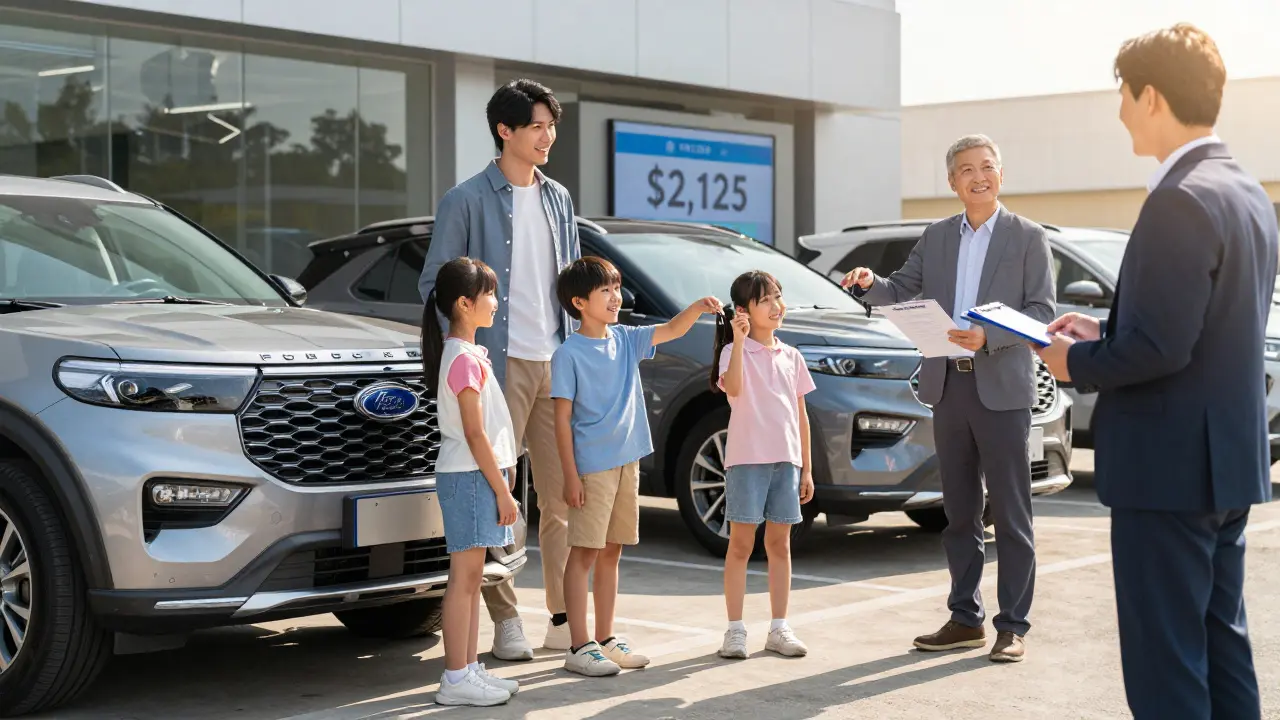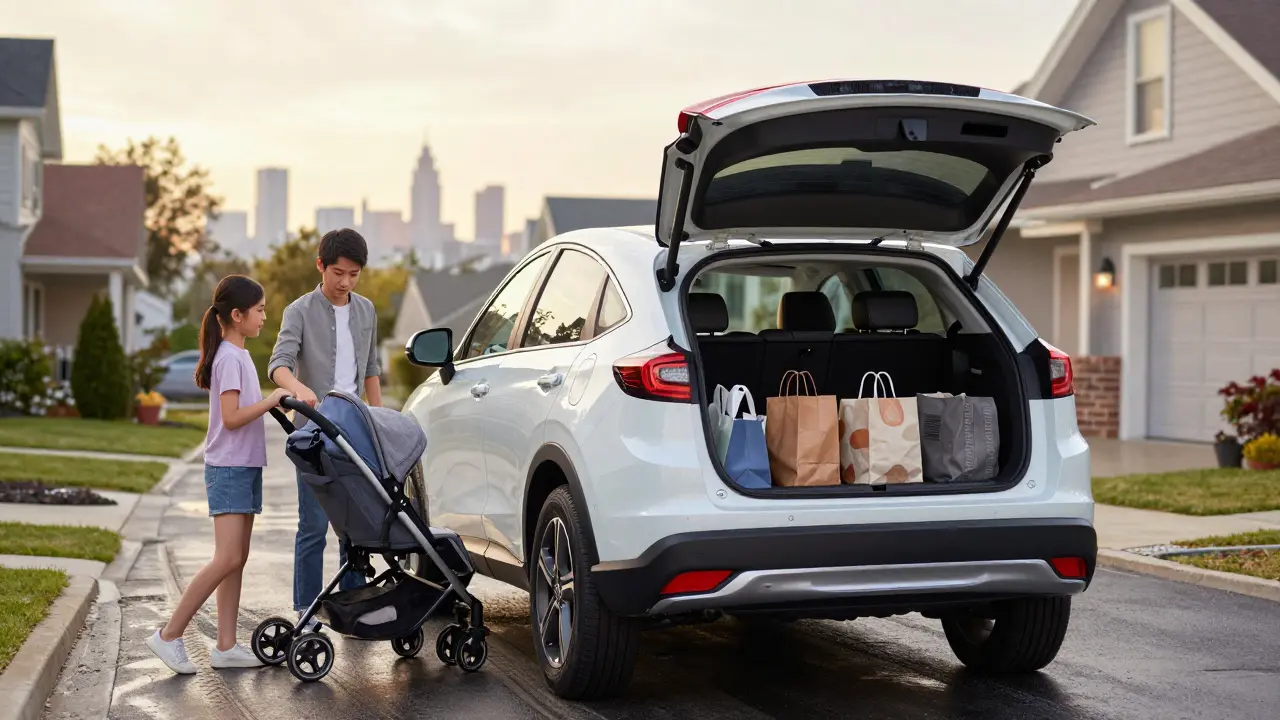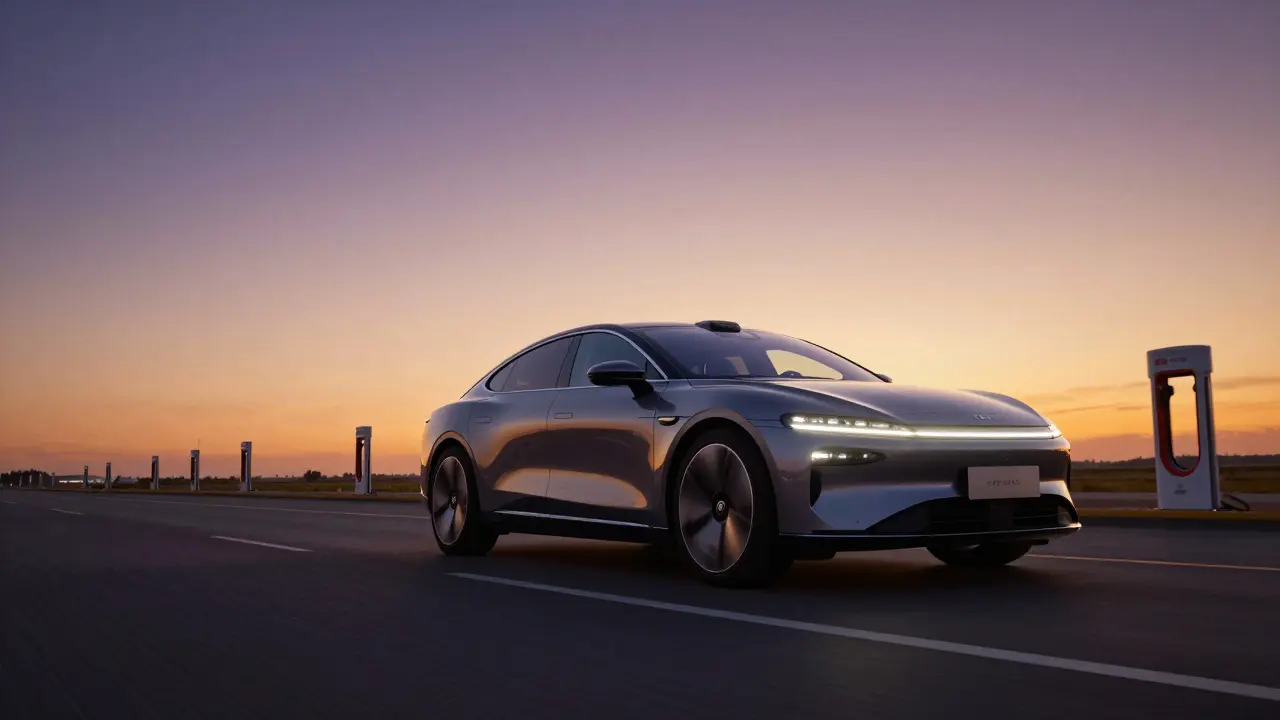Cars didn’t just change how we travel-they reshaped cities, jobs, and even what a weekend feels like. You’re here to see the story end to end: where the car came from, how it kept reinventing itself, and what’s actually next. You’ll get a tight timeline, the turning points that mattered (safety, emissions, electronics, electric), and simple rules to make sense of the next wave. Expect facts, not fanboy takes.
- TL;DR: From 1886 to 2025, the car evolved in waves-mass production, safety, emissions control, electronics, and now electrification and software-defined vehicles.
- Safety and emissions rules moved the market more than hype did; seat belts, airbags, ESC, catalytic converters, and OBD-II reshaped design.
- EVs aren’t new-they led early on, lost to cheap gasoline, and returned when batteries got cheap and policy kicked in.
- Watch three drivers of the next decade: battery cost and durability, charging buildout, and software/autonomy maturity-not just range.
- Use simple math to compare costs: fuel per mile vs electricity per mile, plus maintenance and depreciation.
You’re likely here to: (1) scan a clean timeline for school, research, or curiosity; (2) grasp the big tech leaps without the jargon; (3) compare gas, hybrid, and EV eras with real milestones; (4) get predictions you can sanity-check; (5) walk away with a cheat sheet of dates and rules of thumb.
From Horseless Carriages to Highways: A Clear Timeline
I live in New York, the first U.S. state to require seat belts (1984). I see 100-year-old Packards tucked in garages and bright yellow plug-in taxis in the same week. That’s the whole arc-heritage and reinvention sharing the street. Here’s the timeline that actually matters, with why each phase stuck.
1886-1915: The spark - Karl Benz’s Patent-Motorwagen (1886) sets the tone for gasoline. Yet early city cars were often electric: quiet, clean, and easy to start. But batteries were heavy and expensive, roads were rough, and gasoline was getting cheaper.
1913-1925: Mass production - Ford’s moving assembly line cuts build time from about 12.5 hours to ~1.5 hours for a Model T. Cars go from luxury to tool. Standard parts and processes begin to beat handcrafted variation.
1920s-1930s: Comfort and reliability - Enclosed bodies, electric starters, better tires, and dependable ignition make daily driving predictable. The car becomes the default for commuting where roads exist.
1940s-1950s: Highways and style - Postwar boom. Interstates, V8 power, fins, chrome. Racing tech trickles down. But the era also hides a safety gap: dashboards are metal, steering columns are unforgiving.
1959-1968: Safety wakes up - Volvo patents the 3‑point seat belt in 1959 and gives it away. Ralph Nader’s 1965 book spotlights the gap between speed and safety. U.S. safety standards follow.
1970s: Emissions and oil shocks - The U.S. Clean Air Act (1970) forces a rethink. Catalytic converters (1975) and unleaded gasoline arrive. The 1973 oil crisis pushes efficiency to the top of the list.
1980s-1990s: Electronics everywhere - Electronic fuel injection replaces carburetors. Anti-lock brakes (ABS) spread. On-board diagnostics becomes standard with OBD‑II (1996), giving mechanics and regulators a common language.
Late 1990s-2000s: Airbags, IIHS ratings, hybrids - Dual front airbags become standard. The Toyota Prius (1997 Japan, 2000 U.S.) proves hybrid efficiency at scale. Safety ratings start to drive consumer choice.
2010s: EVs and advanced driver assistance - Battery costs fall fast. The Tesla Model S (2012) shows long-range EVs are real. Electronic stability control (ESC) becomes mandatory in the U.S. in 2012. Cameras and radar bring lane keeping and automatic emergency braking to the mainstream.
2020s: Electrification scales, software defines the car - EVs jump in market share in Europe and China; the U.S. follows more slowly. Over-the-air software updates spread. Many cars now ship with Level 2 driver assist standard. Robotaxis exist in a few U.S. cities, still limited by regulation and reliability.
| Year | Milestone | What Changed | Impact/Stat |
|---|---|---|---|
| 1886 | Benz Patent-Motorwagen | First practical gasoline car | Launches the modern ICE era |
| 1913 | Moving assembly line | Mass production of Model T | Build time cut to ~1.5 hours |
| 1959 | 3‑point seat belt (Volvo) | Standardized restraint | Core life-saver in crashes |
| 1970 | U.S. Clean Air Act | Emissions limits begin | Drives catalytic converter adoption |
| 1975 | Catalytic converters, unleaded gas | Cuts CO/HC emissions | Urban air quality improves |
| 1980s | EFI and ABS spread | Electronics manage fuel and braking | Shorter stops; better cold starts |
| 1996 | OBD‑II required (U.S.) | Standard diagnostic port | Faster, consistent repairs and inspections |
| 1997/2000 | Toyota Prius (hybrid) | Mass-market electrified powertrain | Higher MPG in city driving |
| 2012 | ESC mandatory (U.S.), Tesla Model S | Loss-of-control crashes fall; long-range EVs prove out | IIHS: ESC halves fatal single-vehicle crashes |
| 2015-2023 | ADAS and EV scaling | Auto braking, lane keep; EV market share rises | IEA: >14M EVs sold in 2023 worldwide |
Quick reality check: technology rarely wins alone. Policy, prices, and convenience make or break adoption. Seat belts moved when states mandated use. Emissions improved when regulations met better chemistry and sensors. EVs took off when battery prices fell and charging showed up where people park.
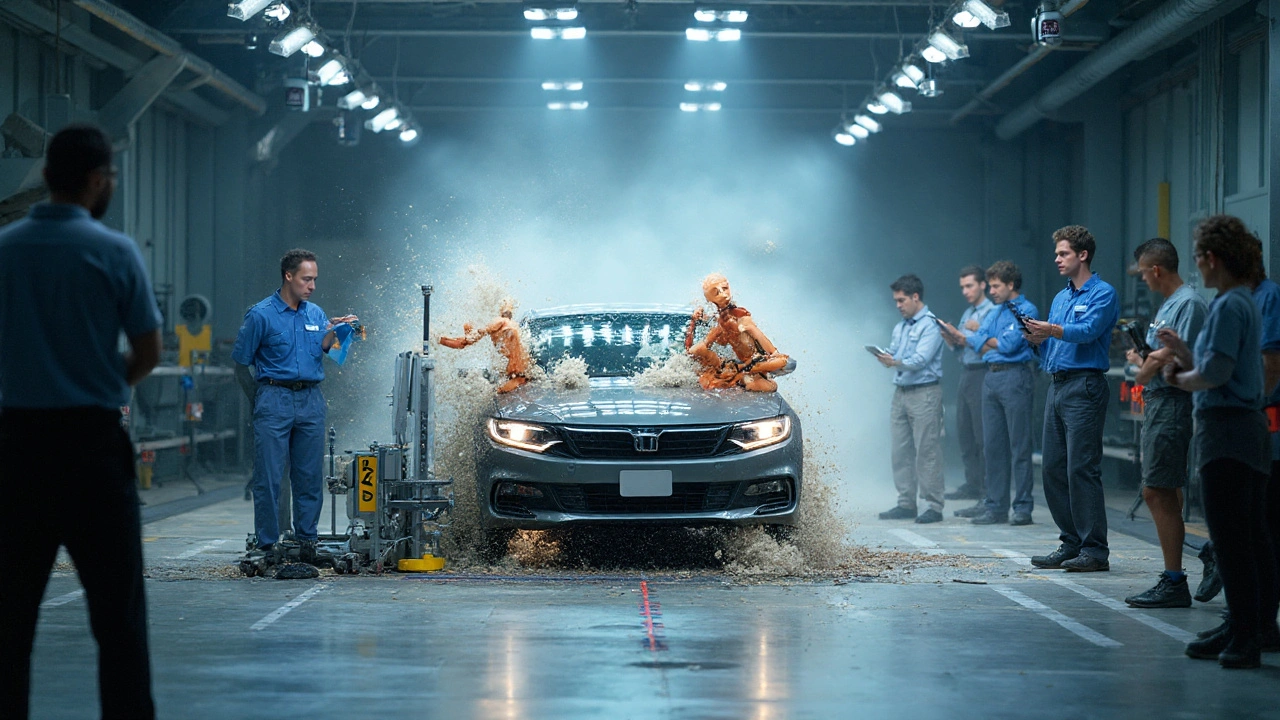
How Technology, Policy, and Culture Shaped the Car
Think of car progress as layers. Powertrain, safety, emissions, software-and the people and rules around them-stack up to change the experience.
Powertrain: from carburetors to chips to kilowatts. Carburetors were simple but dumb; they fed engines the same fuel mix regardless of conditions. Electronic fuel injection (EFI) uses sensors and a computer to meter fuel precisely, so cold starts, hills, and heat stop being a problem. Turbocharging recovers energy from exhaust to boost power and efficiency. Hybrids add a battery and motor to capture braking energy and assist the engine at low speeds. EVs cut the engine out entirely; one moving part in the motor, instant torque, no oil changes. The big constraint? Energy storage and charging time.
Safety: design beats luck. The three-point belt, crumple zones, collapsible steering columns, airbags, and ESC are not “optional extras”-they turned survivability into a design goal. The Insurance Institute for Highway Safety (IIHS) shows ESC reduces fatal single-vehicle crash risk roughly by half. New York’s 1984 seat belt law was the first in the U.S., and compliance spread because the data was undeniable.
Emissions: chemistry plus control. The catalytic converter (platinum, palladium, rhodium) turns CO, hydrocarbons, and NOx into less harmful gases. That only works with unleaded fuel, which is why leaded gasoline had to go. OBD‑II made it possible to catch failed sensors or caps before emissions spiked. EPA Tier standards and Europe’s Euro rules kept tightening the screws, and automakers responded with better combustion, tighter seals, and smarter software.
EVs: not a new idea, just finally competitive. Early 1900s electrics were smooth and city-friendly, but battery tech and infrastructure weren’t ready. Lithium-ion dropped costs by learning curve and scale-consumer electronics helped first; then cars. Policy pushed too: tax credits, zero-emission sales targets, and city clean-air zones.
“Global electric car sales exceeded 14 million in 2023, a new record.” - International Energy Agency, Global EV Outlook 2024
Three forces make EV adoption real instead of wishful thinking:
- Battery cost and durability - Cells got cheaper and more durable. Pack warranties (often 8 years/100,000 miles or more) built trust.
- Charging where people park - Home charging is the killer app. Public fast charging fills the gaps for long trips.
- Total cost, not sticker price - Fuel and maintenance swing the math. Regenerative braking saves pads. No oil changes, fewer fluids, fewer moving parts.
Software: the new drivetrain. Modern cars are rolling computers. Over-the-air updates fix bugs and add features. Advanced driver assistance systems (ADAS) use cameras, radar, sometimes lidar, to keep lanes and brake when you don’t. True autonomy still has edge cases-weather, weird construction zones, mis-marked lanes-but driver assist has already cut low-speed fender benders and rear-end crashes.
Culture and market shape the metal. People don’t buy wind tunnels, they buy lives. Minivans rose, then SUVs took over. In the U.S., SUVs and crossovers now dominate because they feel safe, sit high, and fit families and gear. That has trade-offs: more weight can hurt efficiency and pedestrian safety unless design compensates with better hoods, sensors, and braking systems.
Rule of thumb: Adoption comes in three waves.
- Wave 1: Luxury and early adopters pay more for new tech (airbags, ABS, long-range EVs).
- Wave 2: Mid-market gets it when cost drops and rules or ratings nudge buyers (think ESC, advanced AEB).
- Wave 3: It’s standard when suppliers scale and regulations require it (OBD‑II, backup cameras).
When you see prices drop, regulations tighten, and convenience improve at the same time, you’re at the tipping point. That’s how the evolution of automobiles really works.
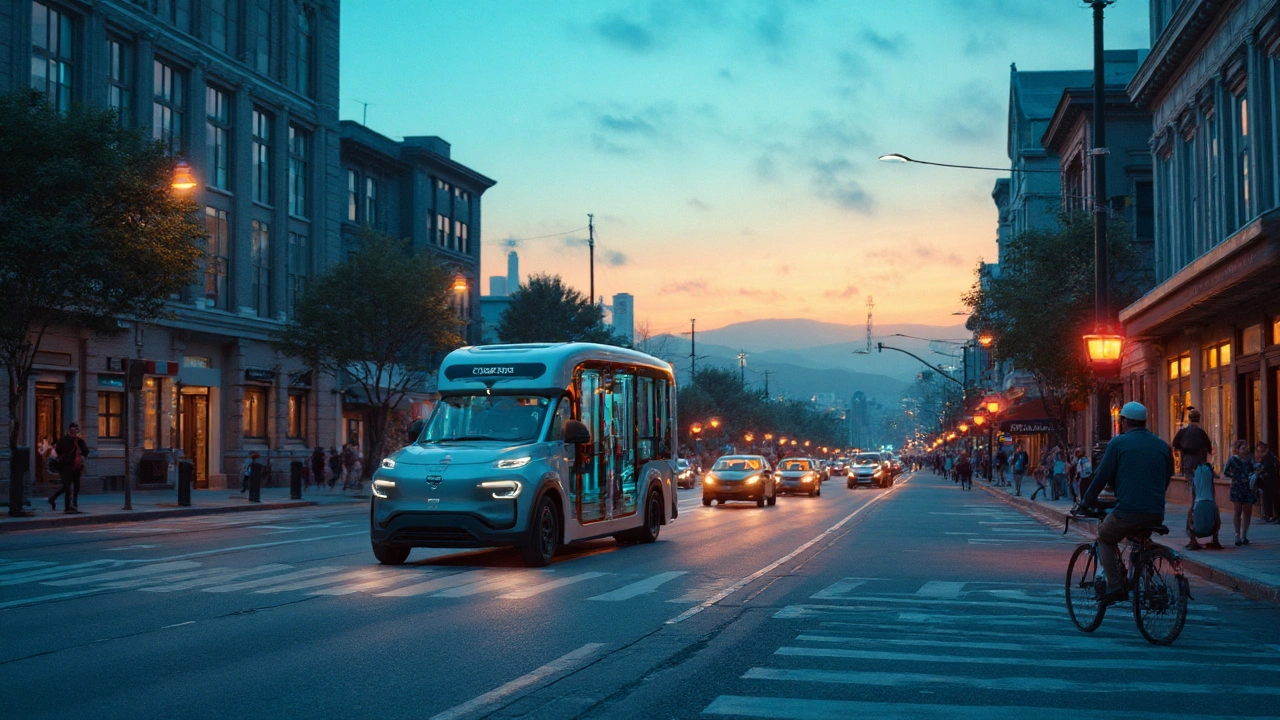
What’s Next-and How to Use This History Today
Looking forward isn’t guesswork if you anchor it in the last 140 years. Here’s how to read the next decade and make choices now.
What’s likely in the 2025-2035 window
- More EVs, smarter hybrids - Expect more affordable EVs with simpler chemistries (like LFP) and longer-life packs. Hybrids stick around because they’re easy wins for fuel economy and they reduce model-line emissions without new charging habits.
- Charging fills the boring gaps - Plug standards converge; reliability becomes the metric that matters. The best stations will show up in the places you already stop: grocery stores, highway rest areas, apartments.
- Software-defined cars - Feature bundles tied to subscriptions will be debated, but safety updates and energy tuning become normal. Diagnostics and preventive maintenance go predictive.
- Driver assistance gets better, not wizard-like overnight - Wider adoption of hands-on or limited hands-off systems on mapped highways; true driverless use stays in selected cities and routes where it’s supervised and profitable.
Simple cost math you can use
- Gas car fuel cost per mile ≈ (Price per gallon) ÷ (MPG). Example: $3.80 ÷ 30 ≈ $0.13/mile.
- EV electricity cost per mile ≈ (kWh/100 miles × price per kWh) ÷ 100. Example: 28 × $0.18 ÷ 100 ≈ $0.05/mile.
- Maintenance tends to favor EVs (no oil, fewer moving parts). Tires and brakes still matter; EVs often use pads less thanks to regen.
- Total Cost of Ownership (TCO) = purchase price − incentives + fuel/electricity + maintenance + insurance − resale value.
Quick cheat sheet: spot the era by the features
- No seat belts, metal dash, carburetor smell? Pre-1960s.
- Lap belt only, leaded-gas sticker, simple emissions gear? 1960s-early 1970s.
- Catalytic converter and unleaded only, electronic ignition, angular crash structures? Late 1970s-1980s.
- OBD‑II port under dash, dual airbags, plastic intake manifolds? Mid‑1990s-2000s.
- Big center screen, driver-assist icons, app for the car? 2010s-today.
Decision help: which powertrain fits your life?
- If you can charge at home or work most days and drive under 150 miles/day: EV is usually cheaper to run and simpler to own.
- If you road-trip often through sparse charging areas: hybrid or plug-in hybrid reduces stops and anxiety.
- If you tow heavy loads often: high-torque EVs tow well but range drops; a hybrid or efficient ICE may suit current infrastructure.
- If you keep cars 10+ years: focus on long-term battery warranties for EVs and proven engines/transmissions for ICE/hybrids.
Pro tips
- Don’t get hypnotized by range alone. Charging reliability and where you park matter more week to week.
- Check safety ratings (IIHS, NHTSA) first, not trim packages.
- Software support is the new spare part. Look for brands with a track record of updates and fix rates.
- For classics, plan for parts sourcing, ethanol-safe fuel lines, and realistic braking performance in modern traffic.
Pitfalls to avoid
- Assuming a tech is ready because it demos well. Look for warranty policies and recall rates.
- Underestimating weight. Bigger isn’t always safer for others on the road; look for pedestrian and crash-avoidance scores.
- Ignoring resale. Rapid tech change can compress resale values in some models; proven platforms hold better.
Mini‑FAQ
- Did EVs exist before Tesla? Yes. Early 1900s electrics were common in cities. GM’s EV1 (1990s) was an early modern attempt. Tesla proved long-range and software could sell.
- When did seat belts become mandatory? The 3‑point design is 1959. New York made belt use mandatory in 1984; other U.S. states followed with their own timelines.
- Why did diesel shrink in the U.S. for cars? Fuel quality, emissions equipment costs, and the fallout from diesel emissions scandals made gasoline and hybrids more attractive to U.S. buyers.
- When did computers arrive in cars? Engine control modules appeared widely in the 1980s; OBD‑II in 1996 standardized diagnostics. Now, dozens of controllers run everything from braking to seats.
- Will hydrogen cars take over? They’re compelling for heavy-duty and specific fleets where fast refueling matters. For passenger cars, EVs lead due to efficiency and charging access.
Next steps
- Writing a report? Use the table above as your backbone; cite NHTSA for safety, EPA for emissions rules, and IEA for EV sales. Keep eras tight: mass production, safety, emissions, electronics, electrification.
- Teaching kids or a club? Bring props: an old spark plug, a catalytic converter photo, a toy battery pack. Have them match parts to eras.
- Shopping used? For ICE, prioritize 2012+ for ESC and mature airbags; for EVs, check battery health reports, DC fast-charge curves, and thermal management type.
- Visiting a museum or cars & coffee? Try the cheat sheet above to “date” a car on sight. Ask owners about parts and maintenance realities-stories beat plaques.
Troubleshooting different scenarios
- Range anxiety with an EV: Plan by time, not miles. Target 15-80% fast-charge windows; keep home charging as your baseline.
- Worried about safety: Look up the specific car’s IIHS small-overlap and pedestrian scores. Add driver-assist if you commute in heavy traffic-it’s fatigue insurance.
- Budget choices: Run the per‑mile math with real local energy prices. Cheap electricity shifts the outcome more than you think.
- Classic ownership: Budget for a brake upgrade, ethanol-safe hoses, and tires with recent date codes. Keep a fire extinguisher and battery kill switch.
Sources worth knowing
- NHTSA for safety effectiveness (seat belts, ESC, airbags).
- EPA for emissions rules (Clean Air Act, Tier standards) and fuel economy trends.
- IIHS for crash tests, pedestrian safety, and real-world risk reductions.
- IEA Global EV Outlook for credible EV adoption and battery trend data.
- SAE International for standards behind features like ESC and ADAS.
If you remember one idea, make it this: cars evolve when technology meets policy and daily life. That’s why we went from hand-cranked engines to silent, software-updated commuters-and why the next big leap will feel obvious in hindsight.


